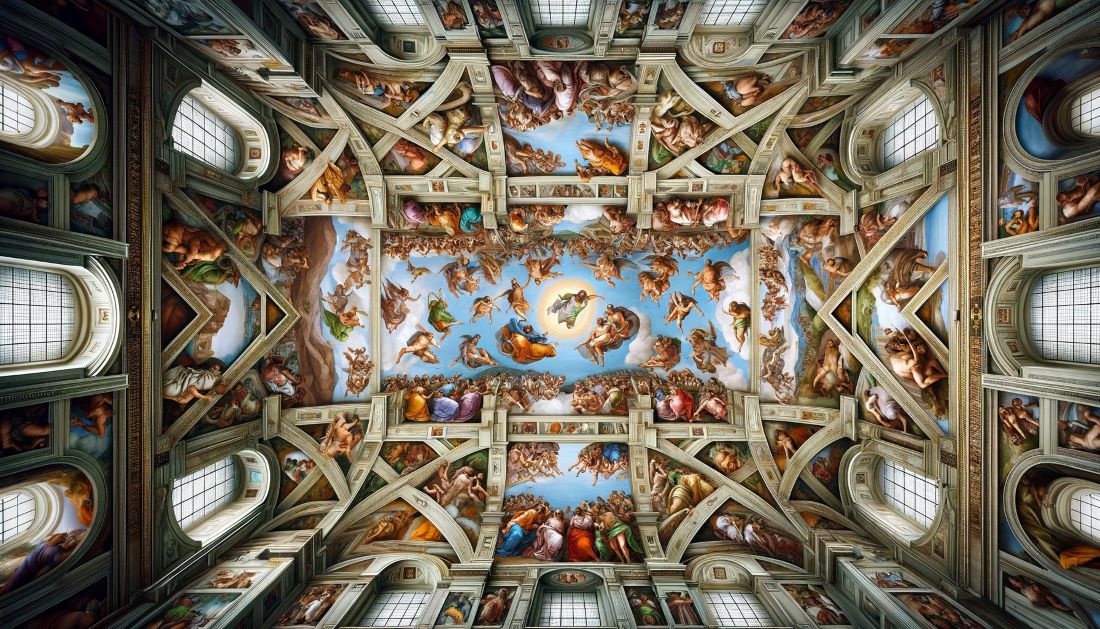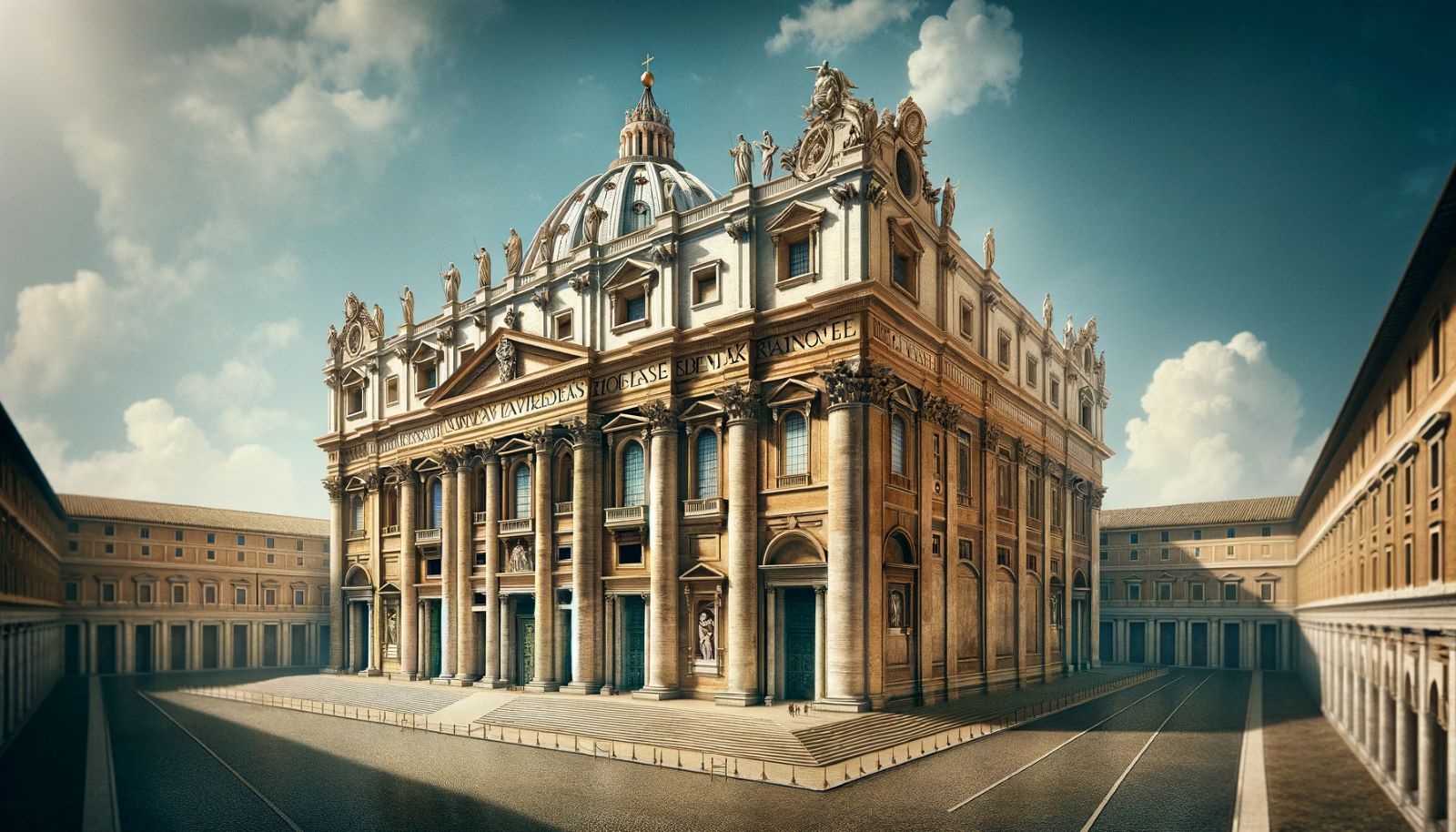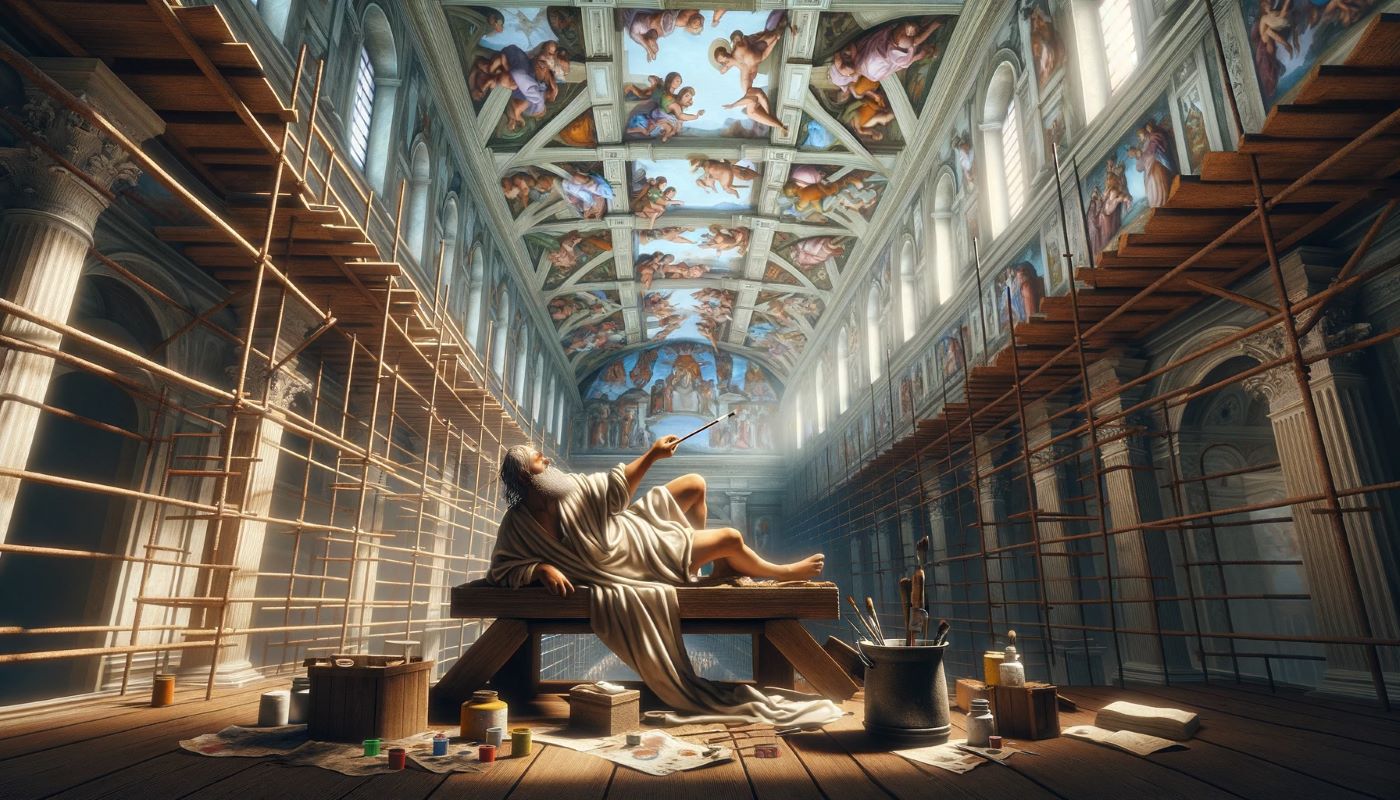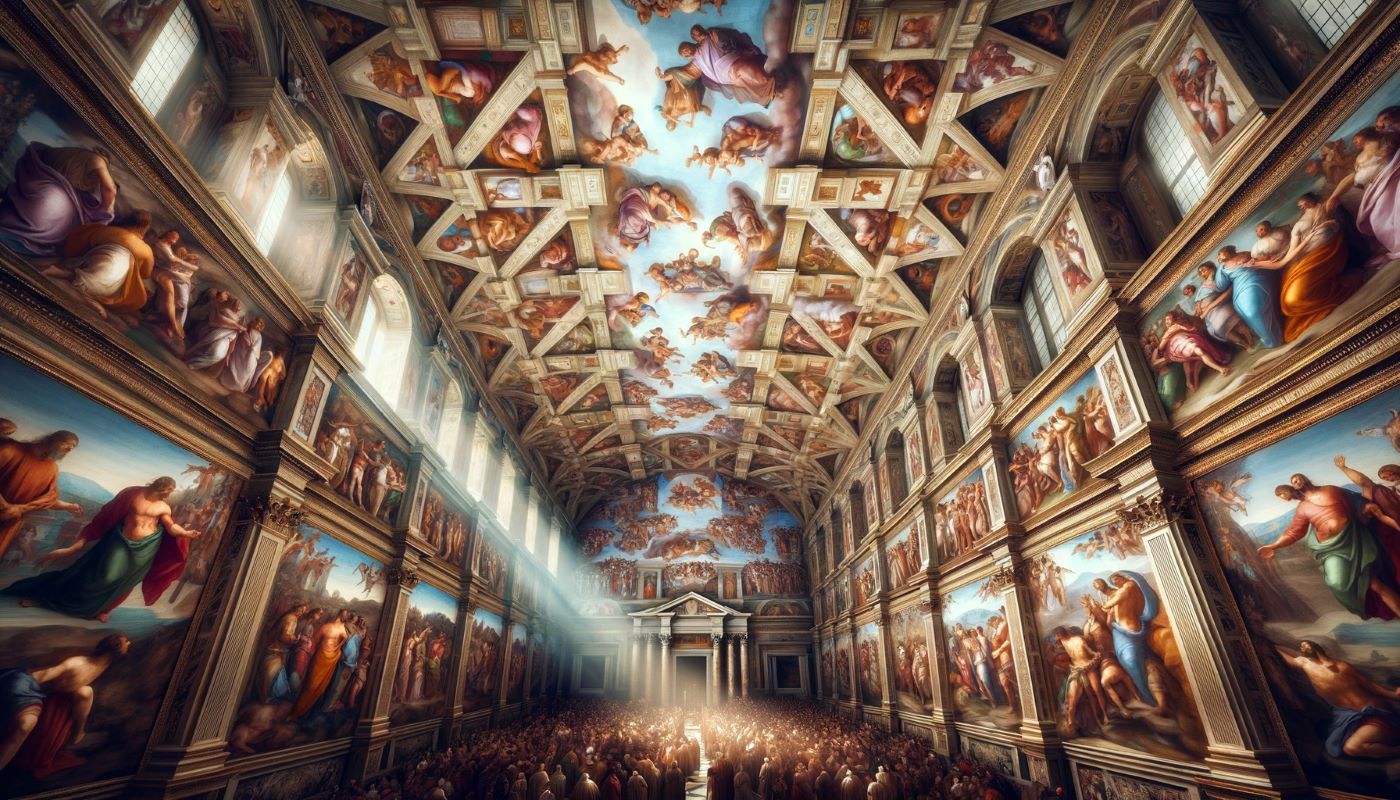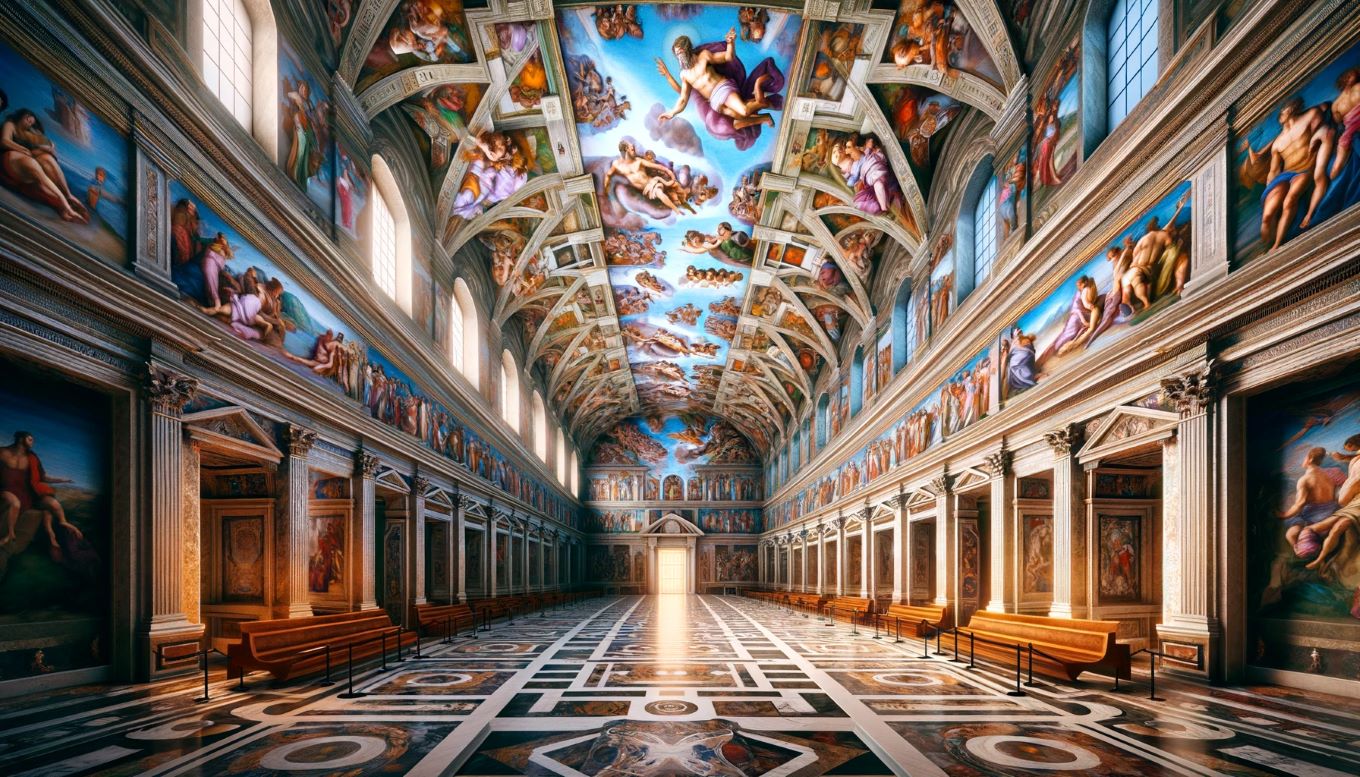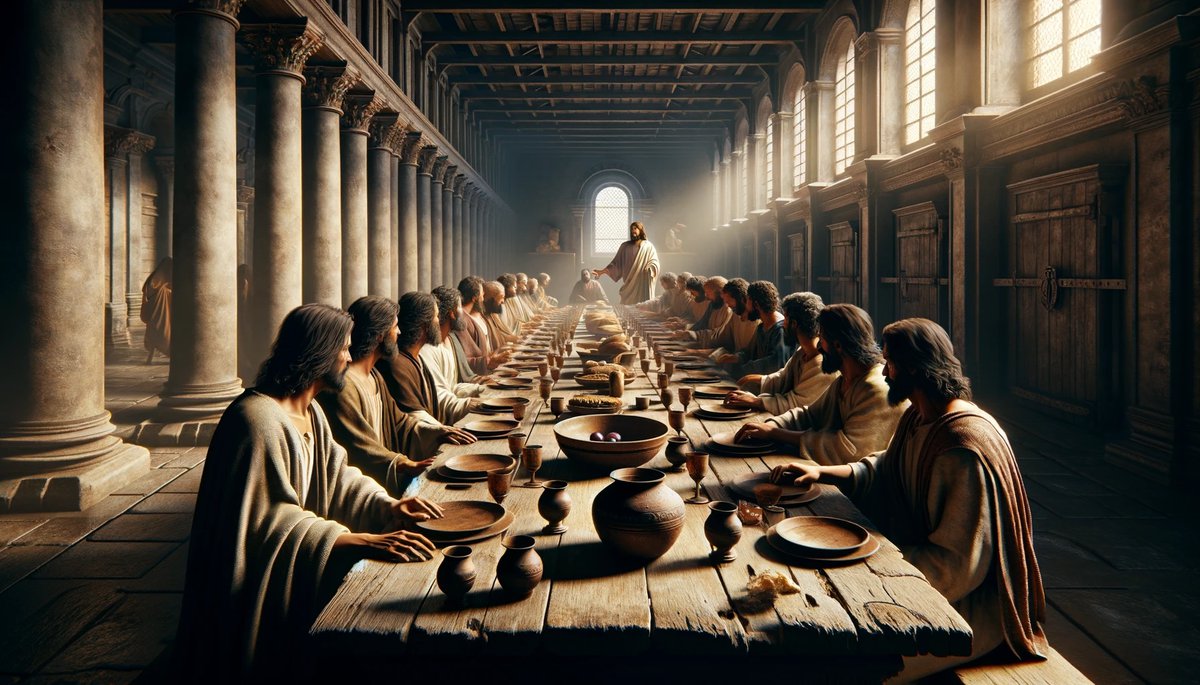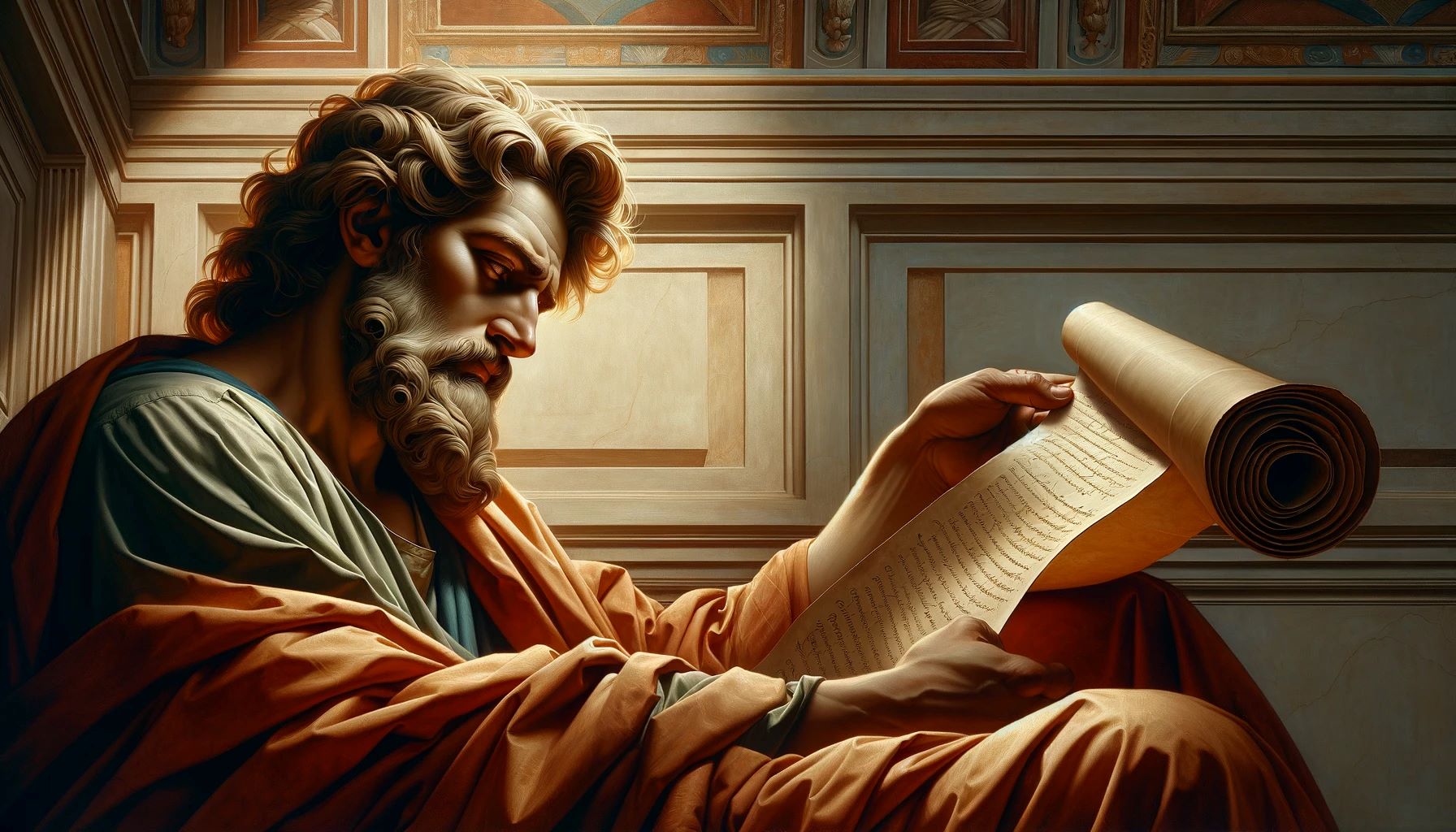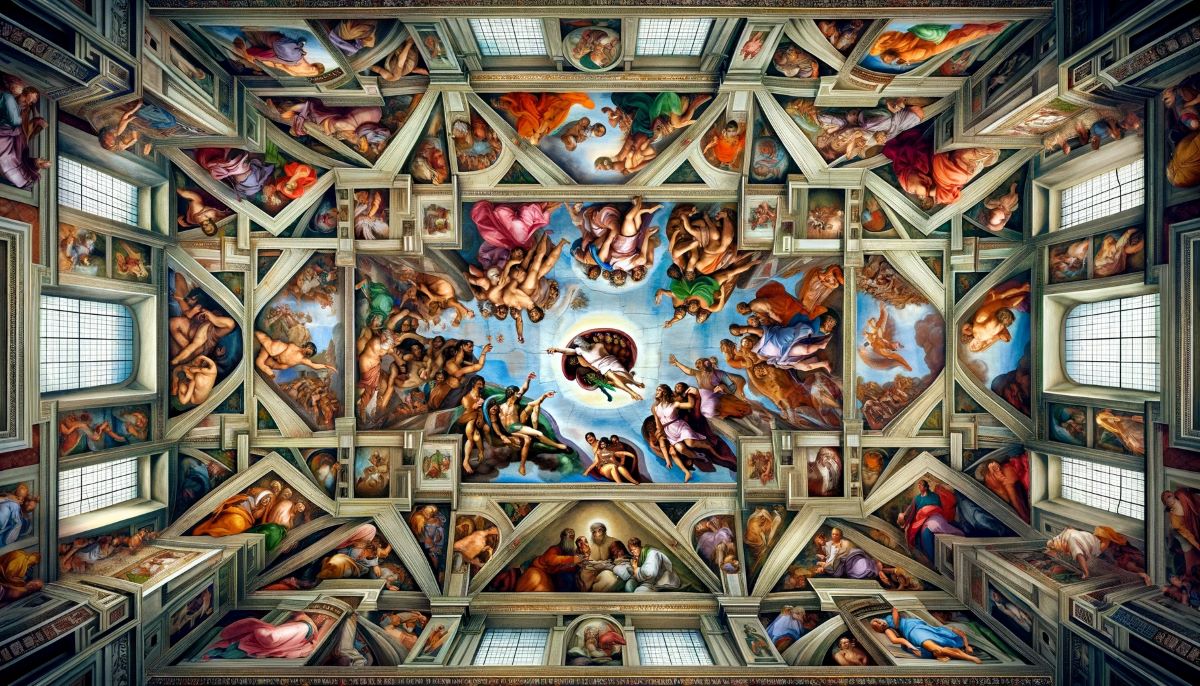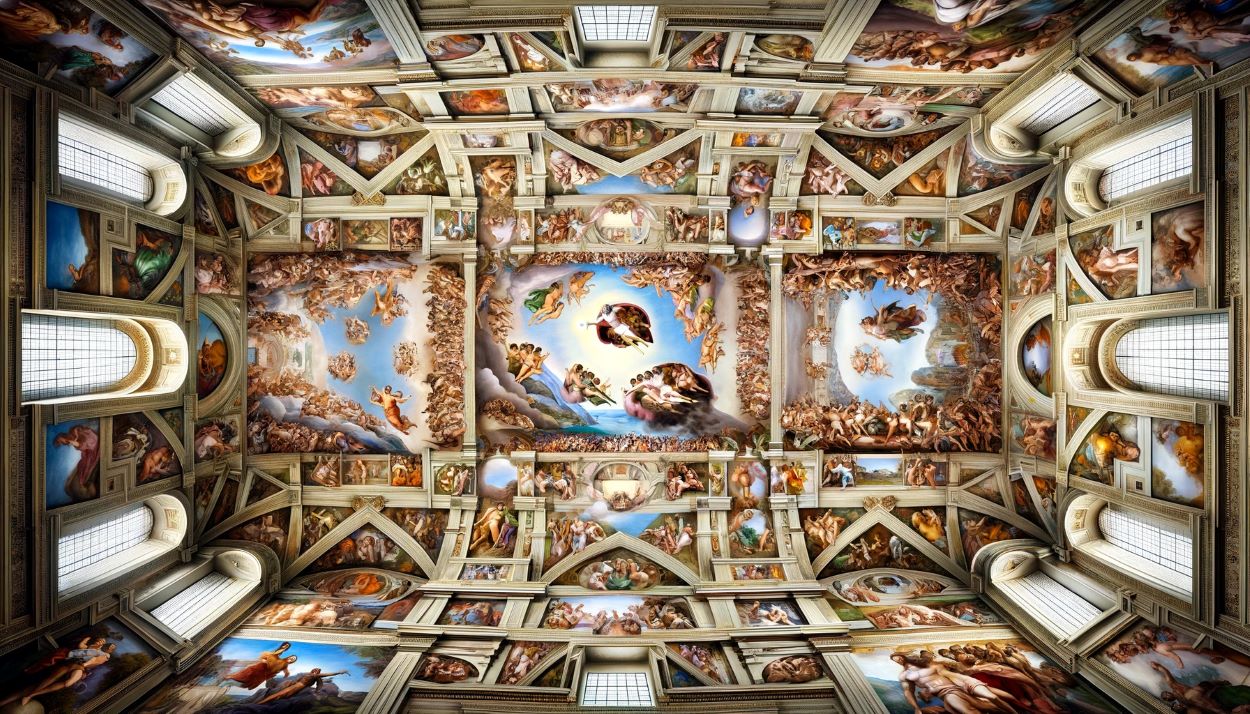Home>Arts and Culture>Why Is It Called Sistine Chapel
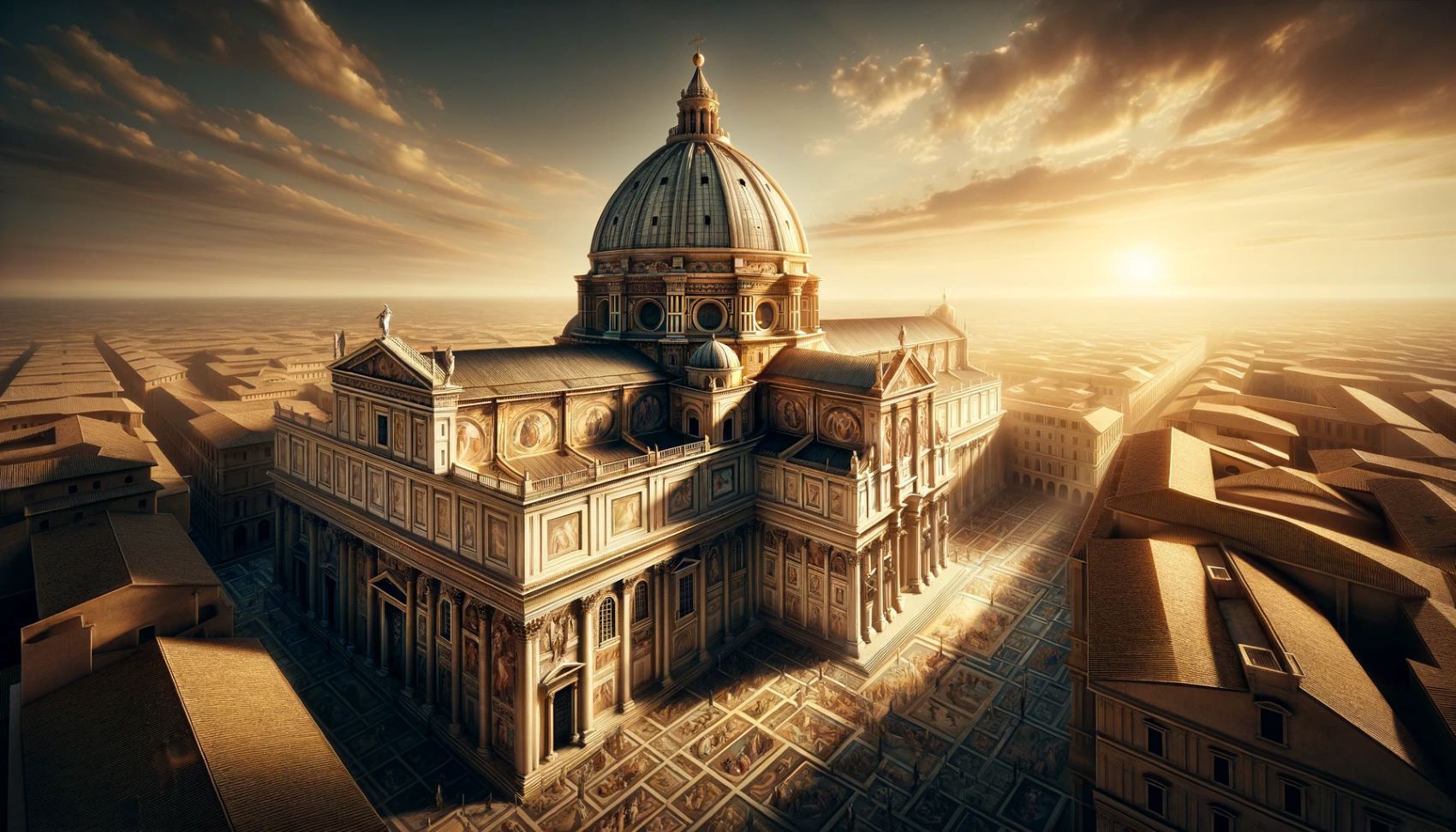

Arts and Culture
Why Is It Called Sistine Chapel
Published: March 4, 2024
Jason DeRose, Managing Editor at Christian.net, uses his expertise in religion and journalism to deepen understanding of faith's societal impacts. His editorial leadership, coupled with a strong academic background, enriches the platform’s diverse content, earning him recognition in both journalism and religious circles.
Discover the history behind the name "Sistine Chapel" and its significance in arts and culture. Uncover the fascinating story behind this iconic masterpiece.
(Many of the links in this article redirect to a specific reviewed product. Your purchase of these products through affiliate links helps to generate commission for Christian.net, at no extra cost. Learn more)
Table of Contents
The History of the Sistine Chapel
The Sistine Chapel is a renowned chapel located in Vatican City, the papal enclave within Rome, Italy. It was initially known as the Cappella Magna and was consecrated on August 15, 1483. The chapel takes its name from Pope Sixtus IV, who commissioned its construction. The history of the Sistine Chapel is rich and significant, making it a cultural and religious landmark.
-
Commissioning and Construction: The Sistine Chapel was commissioned by Pope Sixtus IV, who wanted to build a grand chapel for the primary purpose of the celebration of the Mass. The construction of the chapel began in 1473 and was completed in 1481. It was designed by a team of renowned architects, including Baccio Pontelli and Giovannino de Dolci.
-
Significance in Papal Functions: Throughout history, the Sistine Chapel has been the site of important papal ceremonies and events. It serves as the venue for the papal conclave, the process by which a new pope is elected. Additionally, it is the location for various liturgical celebrations, including the Papal Mass on important feast days.
-
Artistic Contributions: The Sistine Chapel is not only renowned for its architecture but also for the breathtaking artwork adorning its interior. The ceiling of the chapel is adorned with the famous frescoes by Michelangelo, depicting scenes from the Book of Genesis and other biblical narratives. These masterpieces have contributed to the chapel's global fame and cultural significance.
-
Restoration and Preservation: Over the centuries, the Sistine Chapel has undergone several restoration projects to preserve its architectural and artistic integrity. The most notable of these efforts was the restoration of Michelangelo's frescoes on the ceiling, which took place between 1980 and 1994. The restoration aimed to remove centuries of dirt and grime, revealing the original vibrant colors and details of the artwork.
The history of the Sistine Chapel is intertwined with the rich tapestry of religious, artistic, and cultural developments. Its significance as a place of worship, artistry, and historical events has solidified its place as one of the most revered sites in the world.
The Architecture of the Sistine Chapel
The architecture of the Sistine Chapel is a testament to the artistic and architectural brilliance of the Renaissance period. Designed by a team of esteemed architects, including Baccio Pontelli and Giovannino de Dolci, the chapel's structure embodies the grandeur and elegance characteristic of the era. Here's a closer look at the architectural features that make the Sistine Chapel a marvel:
-
Dimensions and Layout: The Sistine Chapel measures approximately 134 feet long, 44 feet wide, and 85 feet tall, making it a relatively compact yet imposing structure. Its rectangular shape and soaring height create a sense of awe and reverence as visitors step inside.
-
Exterior Facade: The exterior of the Sistine Chapel is modest in comparison to its ornate interior. The simple yet dignified facade reflects the architectural style prevalent during the late 15th century, characterized by harmonious proportions and restrained ornamentation.
-
Interior Design: Upon entering the chapel, visitors are greeted by a symphony of architectural elements. The soaring barrel-vaulted ceiling, adorned with intricate moldings and decorative motifs, draws the eye upward, creating a sense of vertical grandeur. The chapel's interior is a testament to the harmonious fusion of architectural and artistic elements, creating a space that is both spiritually uplifting and aesthetically captivating.
-
Altar and Sanctuary: At the eastern end of the chapel, the ornate altar and sanctuary stand as the focal point of religious ceremonies. The altar is adorned with intricate carvings and decorative elements, serving as a visual anchor within the chapel's expansive interior.
-
Acoustic Design: The architectural design of the Sistine Chapel also incorporates acoustic considerations. The chapel's dimensions and shape contribute to its renowned acoustics, allowing music and spoken words to resonate with clarity and richness, enhancing the experience of liturgical celebrations and musical performances.
-
Integration of Art and Architecture: One of the most remarkable aspects of the Sistine Chapel's architecture is its seamless integration with the iconic frescoes adorning its interior. The architectural elements serve as a backdrop and framework for the breathtaking artwork, creating a cohesive and immersive visual experience.
The architectural splendor of the Sistine Chapel continues to captivate visitors from around the world, serving as a testament to the enduring legacy of Renaissance art and architecture. Its harmonious proportions, ornate details, and spiritual resonance make it a timeless masterpiece of human creativity and ingenuity.
The Artwork of the Sistine Chapel
The artwork of the Sistine Chapel stands as a pinnacle of artistic achievement, captivating visitors with its breathtaking frescoes and masterful compositions. Executed by the renowned artist Michelangelo and other talented painters, the chapel's interior serves as a veritable gallery of religious and artistic expression. Here's a closer look at the remarkable artwork that adorns the Sistine Chapel:
-
Ceiling Frescoes: The most iconic feature of the Sistine Chapel's artwork is undoubtedly the ceiling frescoes created by Michelangelo. Spanning over 5,000 square feet, these masterful compositions depict scenes from the Book of Genesis, including the famous portrayal of the Creation of Adam. Michelangelo's meticulous attention to detail and profound understanding of human anatomy are evident in every brushstroke, creating a visual narrative that transcends time.
-
The Last Judgment: Adorning the altar wall of the chapel, Michelangelo's monumental fresco, "The Last Judgment," is a dramatic portrayal of the Second Coming of Christ and the final judgment of souls. The powerful and emotive figures depicted in this fresco convey a sense of divine awe and spiritual introspection, leaving a lasting impression on all who behold it.
-
Papal Portraits and Biblical Scenes: In addition to Michelangelo's renowned frescoes, the Sistine Chapel features works by other esteemed artists, including Botticelli, Perugino, and Ghirlandaio. These paintings adorn the chapel's walls, depicting papal portraits, biblical narratives, and scenes from the life of Christ, enriching the visual tapestry of the sacred space.
-
Architectural Ornamentation: The artwork of the Sistine Chapel extends beyond the painted frescoes to encompass the intricate architectural ornamentation that adorns its interior. Elaborate moldings, decorative motifs, and gilded details contribute to the overall aesthetic splendor of the chapel, enhancing the visual impact of the artwork within its architectural framework.
-
Symbolism and Spiritual Allegory: The artwork of the Sistine Chapel is imbued with rich symbolism and spiritual allegory, inviting viewers to contemplate profound theological themes and narratives. From the portrayal of biblical events to the symbolic gestures and expressions of the depicted figures, the artwork serves as a visual testament to the depth of religious faith and artistic expression.
-
Restoration and Preservation: The preservation and restoration of the Sistine Chapel's artwork have been ongoing endeavors to safeguard its beauty and historical significance. The meticulous conservation efforts have ensured that future generations can continue to marvel at the splendor of the chapel's artistic legacy.
The artwork of the Sistine Chapel transcends mere decoration, serving as a profound expression of faith, creativity, and human ingenuity. Its enduring impact on art, culture, and spirituality reaffirms its status as a timeless masterpiece and a testament to the power of artistic vision.
The Influence of the Sistine Chapel
The influence of the Sistine Chapel extends far beyond its physical walls, permeating the realms of art, religion, and culture with profound impact. From its architectural grandeur to the masterful artwork adorning its interior, the chapel has left an indelible mark on the world, shaping the course of artistic expression, religious devotion, and historical significance. Here are the key facets of the Sistine Chapel's enduring influence:
-
Artistic Legacy: The breathtaking frescoes of the Sistine Chapel, particularly those created by Michelangelo, have set a standard of artistic excellence that continues to inspire and awe. Artists and art enthusiasts from around the globe pilgrimage to witness the mastery of form, composition, and narrative depicted on the chapel's ceiling and walls. The influence of these iconic works reverberates through the annals of art history, serving as a touchstone for creativity and technical virtuosity.
-
Spiritual Inspiration: As a sacred space within the heart of the Vatican, the Sistine Chapel has been a source of spiritual inspiration for countless individuals. The ethereal beauty of its artwork, coupled with the sanctity of its purpose, has kindled profound religious experiences and contemplation. Pilgrims and visitors alike have been moved by the chapel's transcendent atmosphere, fostering a deep connection to matters of faith and divine expression.
-
Cultural Icon: The Sistine Chapel has become a symbol of cultural heritage and human achievement, embodying the pinnacle of Renaissance art and architecture. Its influence extends into popular culture, with references to its iconic imagery appearing in literature, film, and various forms of media. The chapel's enduring presence in the public consciousness serves as a testament to its cultural resonance and universal appeal.
-
Architectural Inspiration: The architectural design of the Sistine Chapel, characterized by its harmonious proportions and timeless elegance, has served as a wellspring of inspiration for architects and designers. Elements of its architectural style have been emulated in diverse structures, echoing the chapel's influence in shaping aesthetic sensibilities and spatial design.
-
Educational Resource: The Sistine Chapel stands as an educational resource, offering invaluable insights into the history of art, religious iconography, and the patronage of the papacy. Its influence as a site of learning and scholarship has contributed to the preservation and dissemination of knowledge, fostering a deeper understanding of the cultural and historical contexts in which it was created.
-
Global Symbol of Beauty and Creativity: Beyond its religious significance, the Sistine Chapel has emerged as a global symbol of beauty, creativity, and human aspiration. Its influence transcends geographical boundaries, captivating individuals from diverse backgrounds and beliefs, and serving as a testament to the universal pursuit of artistic expression and spiritual transcendence.
The influence of the Sistine Chapel endures as a testament to the enduring power of human creativity, spiritual devotion, and cultural significance. Its legacy continues to shape the artistic, religious, and historical landscapes, perpetuating its status as a timeless beacon of inspiration and wonder.
The Restoration of the Sistine Chapel
The restoration of the Sistine Chapel stands as a monumental endeavor aimed at preserving the architectural and artistic splendor of this iconic religious edifice. Over the centuries, the chapel's interior, adorned with priceless frescoes and intricate ornamentation, had succumbed to the effects of time, environmental factors, and the accumulation of dirt and grime. The restoration efforts, spanning from 1980 to 1994, sought to revitalize the chapel's visual grandeur and ensure the longevity of its cultural legacy.
The meticulous restoration process involved a team of conservators, art historians, and experts in the field of conservation. Their collective efforts were guided by a profound commitment to honoring the original artistic intent of the chapel's creators while employing cutting-edge techniques to revive its timeless beauty. The restoration of the Sistine Chapel encompassed several key aspects, each contributing to the comprehensive revitalization of this sacred space.
-
Cleaning and Conservation: The accumulation of centuries-old grime and soot had obscured the vibrant colors and intricate details of the chapel's artwork. Through painstaking cleaning and conservation efforts, the conservators delicately removed layers of dirt and pollutants, unveiling the original brilliance of the frescoes and decorative elements. This meticulous process required a delicate balance between thorough cleaning and the preservation of the fragile pigments and plaster.
-
Stabilization of Structure: In addition to the artistic elements, the structural integrity of the Sistine Chapel was a focal point of the restoration. Measures were taken to address issues such as humidity, temperature fluctuations, and the impact of visitor traffic on the chapel's interior. By implementing advanced climate control systems and structural stabilization measures, the restoration aimed to safeguard the chapel against environmental threats and ensure a stable environment for its priceless artwork.
-
Documentation and Research: The restoration of the Sistine Chapel was underpinned by extensive documentation and research efforts. Art historians and conservation experts meticulously documented the condition of the chapel before, during, and after the restoration process. This comprehensive record-keeping serves as a valuable resource for future conservation endeavors and provides insights into the historical and artistic significance of the chapel.
-
Reintegration of Lost Details: Over time, certain details of the artwork had been obscured or lost due to natural aging and previous restoration attempts. The restoration efforts included the meticulous reintegration of these lost details, employing careful inpainting and retouching techniques to ensure a seamless and faithful representation of the original artistic vision.
-
Public Engagement and Education: Throughout the restoration process, the Vatican engaged in extensive public outreach and educational initiatives to raise awareness of the chapel's conservation needs and the significance of its artistic heritage. This inclusive approach fostered a sense of shared responsibility for the preservation of the Sistine Chapel and its cultural legacy.
The restoration of the Sistine Chapel stands as a testament to the enduring commitment to safeguarding humanity's artistic and religious heritage. By revitalizing this unparalleled masterpiece of Renaissance art and architecture, the restoration efforts have ensured that future generations can continue to marvel at the timeless beauty and spiritual resonance of the Sistine Chapel.


